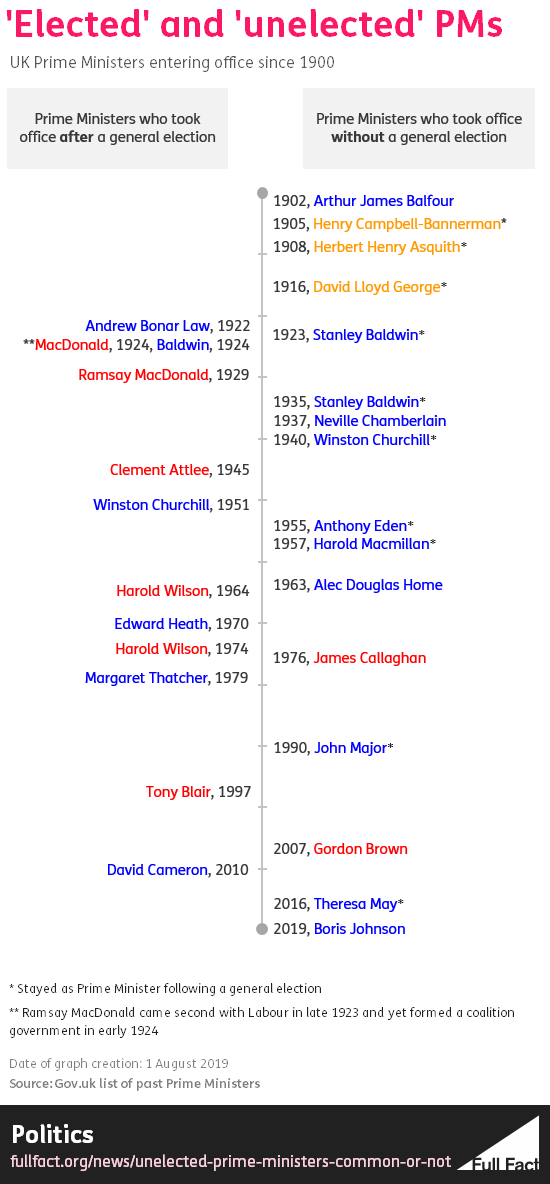'Unelected' Prime Ministers: common or not?
Boris Johnson has won the latest contest to be leader of the Conservative Party and, as a result, he has become Prime Minister without winning a general election.
But how common is this, and what does it actually mean to have an “unelected” Prime Minister?
Honesty in public debate matters
You can help us take action – and get our regular free email
‘Electing’ Prime Ministers
Firstly, it’s important to note that UK voters don’t elect a Prime Minister directly.
There also isn’t a requirement for the Prime Minister to have won a general election as a party leader before they come into office, or to stay in office.
Voters select a Member of Parliament (MP) to represent their constituency. Prime Ministers are officially appointed by the Queen, and stay in office as long as they can command the confidence of the House of Commons (or until the next election).
This is usually the MP who leads the party with the most seats in the House of Commons, or who can unite a coalition of MPs or parties into a working majority.
Political parties select their leaders in various ways, but most include a vote of their members.
How unusual is it to have a Prime Minister without an election?
Far from being unusual, it’s actually the norm for Prime Ministers to enter office outside of a general election.
We’ve taken a look at all the new Prime Ministers the UK has had since 1900. Including Boris Johnson, 23 different people have become Prime Minister since 1900 (we’re ignoring the Marquess of Salisbury who was Prime Minister for spells during the nineteenth century and until 1902).
The post has changed hands 28 times over the same period (some people have been PM more than once).
Ten of those 28 occasions followed a general election where the new Prime Minister led the party which gained the most seats at that general election. One changeover followed a general election where the new Prime Minister led the party which came second in the general election (Labour’s Ramsay Macdonald in 1924 who, despite coming second, managed to form a coalition government with the Liberal party).
So these ten or eleven Prime Ministers took office on or shortly following a general election.
The remaining 17 changeovers happened outside of elections. Of those 17, three were followed by an election called within 50 days of the new Prime Minister taking office.
To take some recent examples, Tony Blair and David Cameron came in due to elections in 1997 and 2010, while Gordon Brown, Theresa May and Boris Johnson all entered office following the resignation of their predecessors.

Hung Parliaments
It’s hard to say whether a hung parliament, when no party wins a majority, means the Prime Minister in charge of a coalition should be described as ‘unelected’. This happened in 1910 (twice), 1923, 1929, 1974, 2010 and 2017.
In 1929 and 2015, the general election directly led to the appointment of a new Prime Minister who took charge of a coalition government (Ramsay Macdonald in 1929 and David Cameron in 2010).
There have also been instances of sitting governments losing their majority in the House of Commons and still remaining in office.
Correction 13 September 2024
We've updated this article to clarify that ten of the 28 time the role of Prime Minister changed hands followed an election where they led the party which gained the most seats rather than votes.